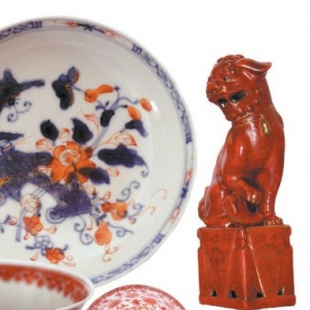A journey through history and across waters
Exhibition of porcelain relics sheds light on colonial South America's trade and cultural links with imperial China

Despite these deep roots, there is relatively little research on how that trade helped South America's culture evolve. However, various studies suggest that porcelain artifacts were widely circulated.
The History Museum of the North has permanent collections that chronicle the region's rich history, while the building itself is a national historical landmark.
The exhibition takes the exploration of China's links to the region a step further and allows visitors to discover the rich history of the porcelain trade, porcelain art and its origins in China, the role of the Silk Road, and the journey these pieces took to Esteco.
On display are items including porcelain figurines, illustrations, bowls and incense burners. They are decorated in designs including peonies, plum blossoms, peach blossoms, pheasants and more.
There are pieces from the Famille Rose, porcelain painted in rose and pink shades, and Famille Verte, which has yellow, blue, red, green and purple color ranges.
The Famille Rose pieces were known in China as yangcai, or "foreign colors" because they originated in Europe in 1685. Famille Verte pieces use a palette of yellow or rich greenish black created largely during the reign of Emperor Kangxi of the Qing Dynasty. Later, during the reign of Emperor Yongzheng, rose colors were favored over the older and more traditional greens, according to the exhibition introduction.
The exhibition helps shine a light on the historical fascination with Asian art collections, "a vogue stemming from a broader European trend prevalent during the 19th and early 20th centuries," Villaran says.
"This movement had an impact on the collection of Oriental pieces, forming the conceptual framework for this exhibition. The display showcases a variety of plates, vases and other tableware decorated with Chinese motifs."
The fragments from 16th-century Esteco are among the oldest pieces on display.
"While no complete pieces have survived, their discovery is significant. It offers insight into the artistic production of everyday objects, both decorative and practical," Villaran says.
The writer is a freelance journalist for China Daily.





































